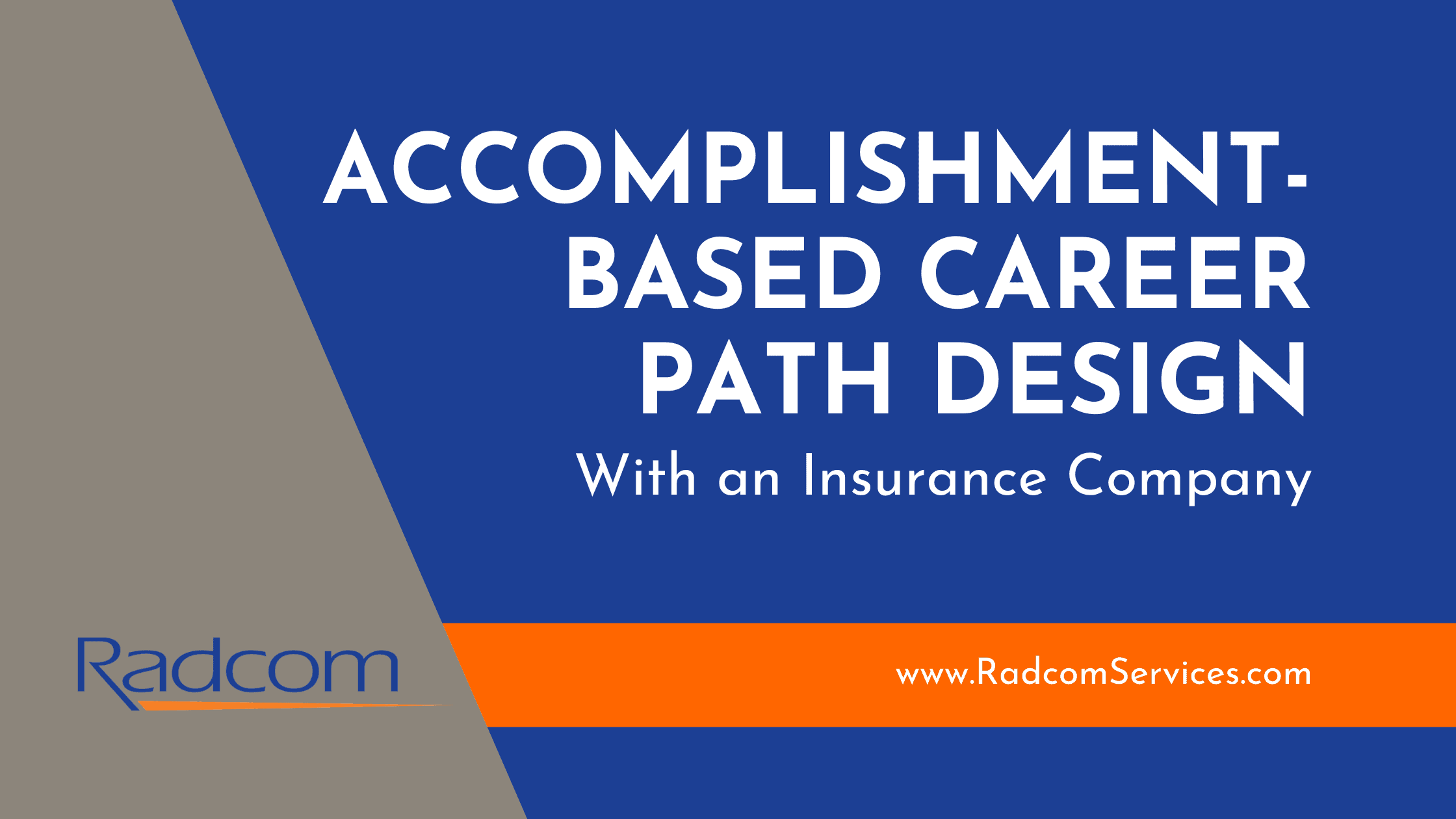
An insurance company engaged Radcom for a career path design project. The company was seeing an increase in resignations because employees weren’t seeing a path for their career growth within the company. Upon further analysis, they determined that creating career paths for their employees would be a good solution to their problem. They decided to start with the Customer Service Associate (CSA) job role, an entry level position.
Performance Analysis
Radcom began by collecting data on the role through a performance analysis. To start, we held several project team meetings with the learning and development (L&D) manager and two technical trainers from two business units. The purpose of the meetings was to brainstorm ideas, learn new concepts, and determine vision/direction. From there, a consultant interviewed CSAs and Client Managers (CMs) to determine the work outputs required of the role for each business unit, as well as:
- The standards that need to be met for the output to be considered successful.
- The key tasks that need to be performed to create a successful output.
- The knowledge, skills, and abilities (KSAs) required to be able to perform the key tasks.
In addition, we reviewed documentation related to the role and its outputs. We then verified the work outputs and other data with the client to ensure we had what we needed to proceed.
Role Overviews
Once all the data was collected, we created a job description, called a role overview, that outlines the work outputs, their standards of excellence, the key tasks for each output, and the KSAs needed for the role in general.
We created two versions of the role overview for the CSA role: one for CSAs in each of the business units.
We also repeated this process for the CM role in both of the business units.
While Radcom only completed the work for one role, we provided a framework and templates the company could use to replicate our work with other roles when our engagement with them concluded. This gives ownership of future performance work to the company’s team. Of course, Radcom is available to help them when necessary, but one of the vital elements of embracing an accomplishment-based focus is that the company is empowered to keep the process going.

Career Path Navigation Guide
From there, Radcom and the client identified and defined the remaining deliverables to be included in a career path navigation guide:
- Role Overview
- Career Path Visual
- Role Playbook
- Skills Assessment
- Career Path Model
Career Path Visual
Radcom provided several mock-ups for a career path progression to use within the company in collaboration with the company’s marketing team. These graphic options provided the company with visual examples for how their career path progression might be presented to staff.
Role Playbook
Radcom participated in meetings with the company to work towards the development of a playbook for the CSA role. This playbook would serve as a template for future playbooks. The purpose of the playbook was to provide an overview of each work output, including the resources, key tasks, and standards necessary to complete it successfully. Work outputs are listed in the playbook according to where it is located within its relevant process.
After that meeting’s conclusion, the company was able to complete a draft of the CSA playbook as a starting point. They also engaged Radcom to develop additional playbooks.
Skills Assessment
The starting point for this was in the existing skills assessment for CSAs in one business unit, which was based on competencies and behaviors associated with the role. We updated the assessment to focus on the work products of the role. We renamed it the Skills Inventory and included both a self-assessment and a supervisor tool for assessment.
Career Path Model
Radcom created a career path model (CPM) for an employee to follow to create a plan for career path development. The CPM includes:
- A self-assessment to determine needs, interests, strengths, weaknesses, and KSAs.
- An initial planning meeting with their supervisor to identify the organization’s direction and the KSAs necessary to meet current, future, and career goals, as well as learning priorities and development opportunities.
- A template with which to draft a development plan.
- Plans for implementation of the CPM.
Onboarding and Employee Development
With the pieces of career pathing in place, the company can now create a process by which new employees and supervisors should be onboarded and developed that incorporates an accomplishment-based approach.
The career path engagement ended with Radcom providing the foundation, framework, and tools they needed to continue the initiative in-house. The company was so convinced by the accomplishment-based approach that their learning and development manager enrolled in a course to learn more about and become certified in accomplishment-based performance improvement. Any new engagement Radcom undertakes with this company will be as partners in their performance journey. In our minds, that is the ultimate success story.


